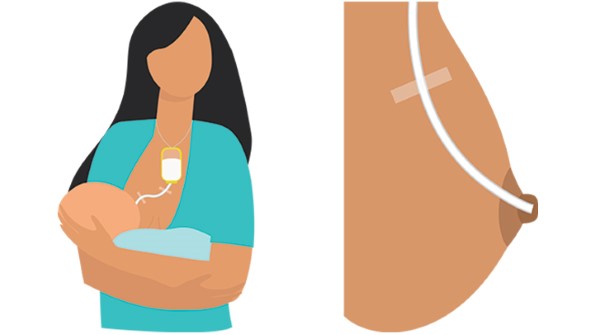In celebration of Breastfeeding/Chestfeeding Awareness Month, here are some lesser known facts regarding feeding an infant!
Babies Practice Swallowing in Utero
A fetus practices swallowing amniotic fluid around 13 weeks gestation, and is able to coordinate sucking and swallowing around 28 weeks gestation.
Latching, Sucking, Swallowing, and Breathing involves the entire brain!
Feeding at the breast/chest is a complex skill! The baby is taking in information from all their senses: the feel of skin, smell, sounds and the flavor of milk. Babies are then responsible for finding a nipple, latching on, beginning to suck while breathing, pausing their breathing to swallow, and then breathing again. Infants latching onto a breast/chest may have a small amount of milk at first and then they need to process a rush of milk once a ‘let down’ starts flowing.
Eating skills are not a ‘reflex’ past 6 months
Babies have reflexes that help them find the nipple and latch on! In most infants, these reflexes integrate, or disappear, between 4-6 months. After about 6 months old, eating is a ‘learned’ behavior instead of a ‘reflex’ behavior.
There are many ways to breastfeed/chestfeed
A Supplemental Nursing System (SNS), uses a small tube with a pouch of milk/ formula on one end and the other taped to the mother’s nipple. This allows formula or pumped milk to be accepted at the breast. This is one way to still gain the benefits of breastfeeding while practicing a coordinated ‘suck, swallow, breathe’ sequence if the baby is too weak to efficiently latch or suck the milk they need to grow.
Another method that allows the baby to work on their sucking skills is finger feeding. This uses a tube that is attached to a clean finger on one end and a pouch of milk/ formula on the other. This allows non lactating partners to support lactating partners, as well as supporting the baby while they practice their sucking skills. This too can help a family reach their goal of breast/chest feeding eventually.
Some families might make the choice to cup or spoon feed their infants pumped milk/ formula in order to avoid using a bottle in the beginning. You can still offer the breast/chest so the baby is able to work on their sucking skills without worry about the amount the baby is accepting.
Babies and older infants can learn to relatch and feed from a breast/chest even after complicated circumstances.
If nursing and/or feeding your infant human milk is important to your family, there are a variety of methods and strategies that can help your family reach that goal. Babies from a wide variety of backgrounds can get the benefits of nursing or being given human milk.
If you have any questions or want to explore your options for infant feeding, our Milestone Team has two therapists that have additional credentials in infant feeding and human lactation. Please schedule a free consultation with our Infant Feeding Team!
Photo Sources:
What To Expect
About Kids Health
iStock




